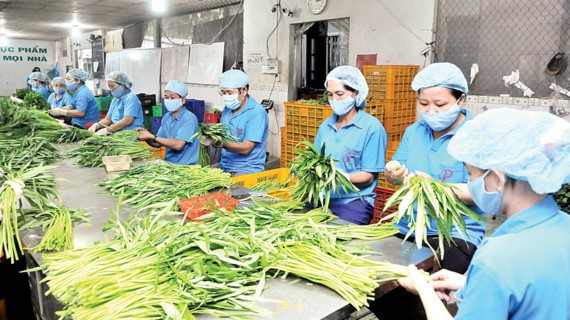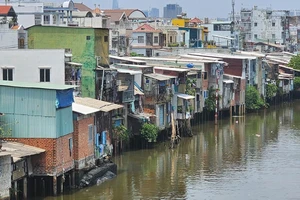
According to Vietnam Cooperative Alliance, the country now has 150,000 cooperative groups, 20,000 cooperatives and 50 cooperative unions with nearly 30 million members.
Of these, HCMC has 391 cooperatives, four unions and 3,528 groups in various fields covering commerce, services, transport, agriculture, handicraft, construction and people’s credit funds.
During ten years from 2002 to 2013, HCMC implemented the 9th Party Central Committee Resolution 5 and the HCMC Party Committee’s action program No.7 on developing collective economics, archiving positive results in both quality and quantity.
The ratio of efficiently operating cooperatives increased from 40 percent in 2001 to 70 percent in 2012. The number of loss making ones reduced from 37 percent to 12 percent.
Ms. Le Thi Hoang Yen, chairwoman of HCMC Cooperative Alliance said that the number of profitable cooperatives was up to near 80 percent last year with outstanding ones from commerce, transport and agriculture fields. Their operation scale and sizes have been expanding.
Cooperatives have joined hands together and with other businesses to develop production and trading, broaden market and increase capital size.
Many have been qualified and affordable for joining the city’s market, price subsidization program and members of the city Cooperative Alliance such as Phuoc An, Tien Phong and Phu Loc.
Accompanying missions from the HCMC People’s Council and People’s Committee to visit and work with many cooperatives at the end of 2016, Sai Gon Giai Phong Newspaper reporters saw cooperatives have been invested more scientifically and methodically.
Mr. Tran Van Thich, director of Phuoc An Agricultural Production and Service Cooperative, said that the cooperative was established in 2006 with only 15 members, VND111 million (US$4,883) in contribution capital and 13.5 hectares farming land.
In the early phase, the cooperative struggled to find consumption sources. So far, its chartered capital and members have reached to VND1.5 billion ($66,000) and 62 members. Production area has reached 25.3 hectares supplying about 6-7 tons of vegetables a day for the market.
The cooperative has own a cold storage able to accommodate four tons of vegetables and fruits, wastewater reservoir and treatment system, preliminary processing and packing facilities, four trucks, 14 net and glass houses with area from 500-1,000 square meters, spraying and lightning systems.
Revenue has risen swinging between VND16-18 billion a year. Last year profit approximated VND1.2 billion last year.
Phuoc An is only one out of ten cooperatives who have developed production in line with value chains to increase added value for products, find consumption sources and provide stable jobs for cooperative members.
They have contributed significantly to the new rural development program in the city.
Striving for 1.2 percent GRDP contribution rate
According to the city People’s Committee, besides the above achievements, the city has still faced difficulties and challenges in developing collective economics.
Most collectives are of small and medium sizes with little capital and low capital accumulation for reinvestment. Assistant policies have been implemented slowly without high efficiency.
The number of cadres specializing in collective economics management is limited. The HCMC Cooperative Alliance has not been strong enough to meet the consultancy and assistance demand of cooperatives.
Therefore, collective economics has contributed only 0.08 percent to the city Gross Regional Domestic Product (GRDP) in 2016.
In the phase of 2015-2020, the city will continue reforming, developing and improving the efficiency of the collective economic sector by fortifying and merging small and weak cooperatives.
Those not operating in line with cooperatives’ nature, principles toward their members’ benefit and under long lossmaking will be dissolved.
Besides the city will also call for more individuals, households and organizations to the sector to further contribute to the city’s economic growth and sustainable poverty reduction.
Deputy director of the Department of Industry and Trade Nguyen Ngoc Hoa said that collective economics has still been innovating to promote efficiency in the context of integration and market economy, improve the competitiveness of cooperatives as well as their products in the market.
That requires synchronous solutions from mechanisms, policies, capital to human resources. Of these the city should give the top priority to luring talents to develop the sector as expected.
HCMC has set a target of developing 1,500 cooperative groups, 175 cooperatives, 10 cooperative unions in the phase of 2015-2020.
The collective economic sector will post the growth rate of over 10 percent a year. Its contribution rate to the city’s gross regional domestic product will hit 1.2 percent.
The city will attract 50,000 workers to the sector. The ratio of cadres with bachelor degree in cooperative management to reach 40 percent, the remaining cadres must have college and intermediate degrees.
























